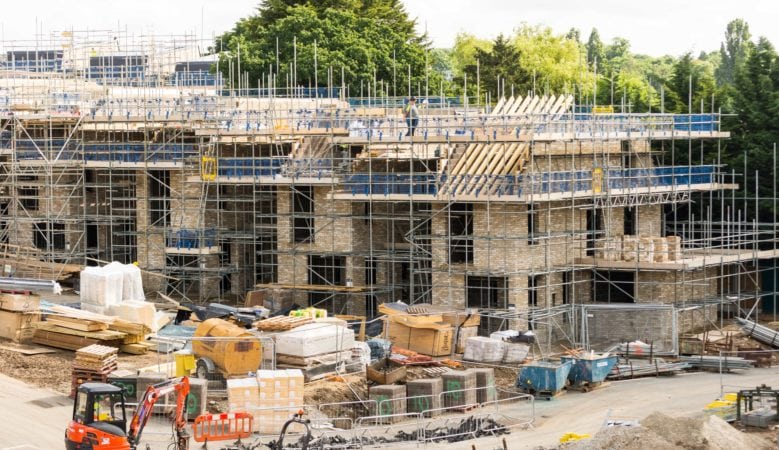Big house builders set to increase output but meeting 300,000 a year target unlikely

Larger home builders in the UK plan to increase their construction rates this year while smaller developers are more likely to build fewer new homes, new research has found.
However, overall just 61% of builders think it is possible to build 200,000 to 250,000 net additional homes each year and just 1% think it is possible to reach the Government’s target of 300,000 a year by 2022.
The research for the Knight Frank House Building report 2018 found that planning remains the main barrier to speeding up housing delivery although the proportion identifying the planning system as a hurdle has fallen since last year. Respondents said outer London, the South East and the West Midlands present the greatest opportunities for house builders during the next three years.
The survey of those responsible for building three quarters of new homes also reveals that the house building industry has responded strongly to the demand for new housing, increasing output by 55% over the last five years.
The annual survey comes at a key time for housing policy, with another new housing minister and a raft of consultations and new rules set to be introduced in the coming year and at a time of wider political and economic uncertainty.
It points out that in terms of house prices, the picture across the UK is changing, with a more evenly spread rate of growth across the country, in contrast to growth being concentrated in London and the South East, as has been the case in recent years.
This more fully reflects the economic recovery seen outside London, especially in major cities. In fact, official Government data shows that housing starts over the last 18 months in Manchester and Birmingham reached highs not seen since before the global financial crisis.
House builders are generally upbeat about the opportunities to build more in the coming years, according to the survey, although the majority feel that meeting the 300,000 target every year will be a stretch.
The report says that an increasingly diverse array of tenures now play a vital role in satisfying housing demand, particularly the Build to Rent sector across cities and town centres. There are also increasing opportunities across the sector for joint ventures, working with Registered Providers and Local Councils to provide new homes.
As is clear from the survey, alternative methods of construction are also set to have an impact on the sector and when it comes to future opportunities, house builders have their eyes on most parts of the country.
It also points out that performance of the UK property market has shifted during the past 12 months. The north/south divide in terms of house price performance has narrowed, with mainstream markets across the Midlands, South West and Scotland outperforming.
Some of these shifts have been exacerbated by tax changes. Successive changes to stamp duty, for example, have resulted in a significant decline in new projects starting in inner London, since a 2015 peak.
The survey asked respondents to list the regions in which they saw the greatest opportunity to their business during the next three years. The South East, London zones 3-6 and the West Midlands were picked as the top three hotspots. Among the bigger builders it was the South East and West Midlands which were picked as the most significant opportunity areas in the coming years.
Respondents were also asked for their opinions on Brexit. The majority said that an uncertain economy was the greatest risk, followed by labour availability and then access to materials. London developers are likely to be disproportionately affected by labour availability because more than half of the capital’s construction site workforce is from overseas.
‘Nationwide, house building looks set increase, particularly on the outskirts of London and across the Midlands, underpinned by more evenly distributed house price growth and high levels of employment in regional cities,’ the report says.
‘However, as identified in the survey, the market is not without its challenges, and continued policy uncertainty has the potential to weigh on output in the coming years,’ it added.




